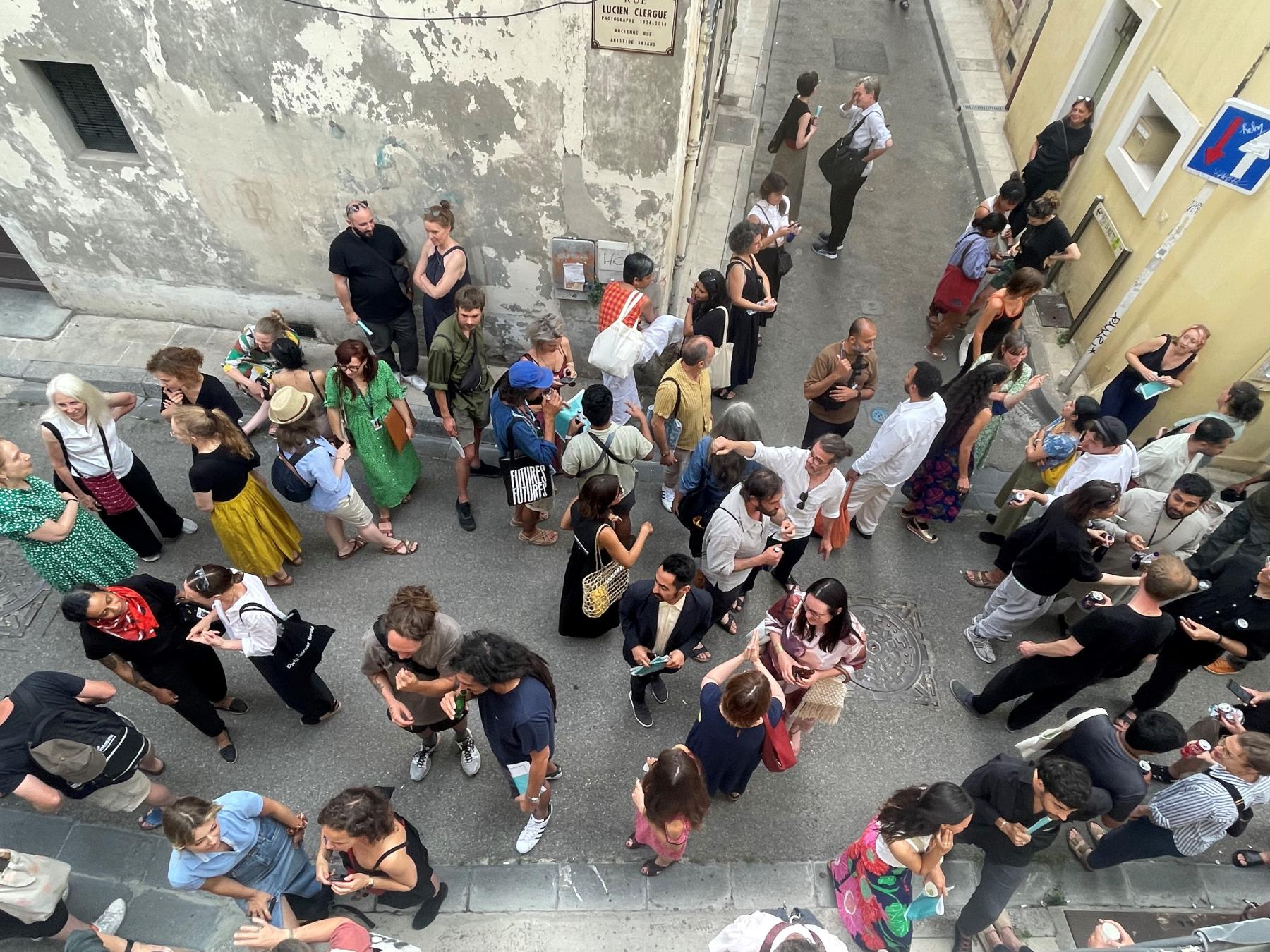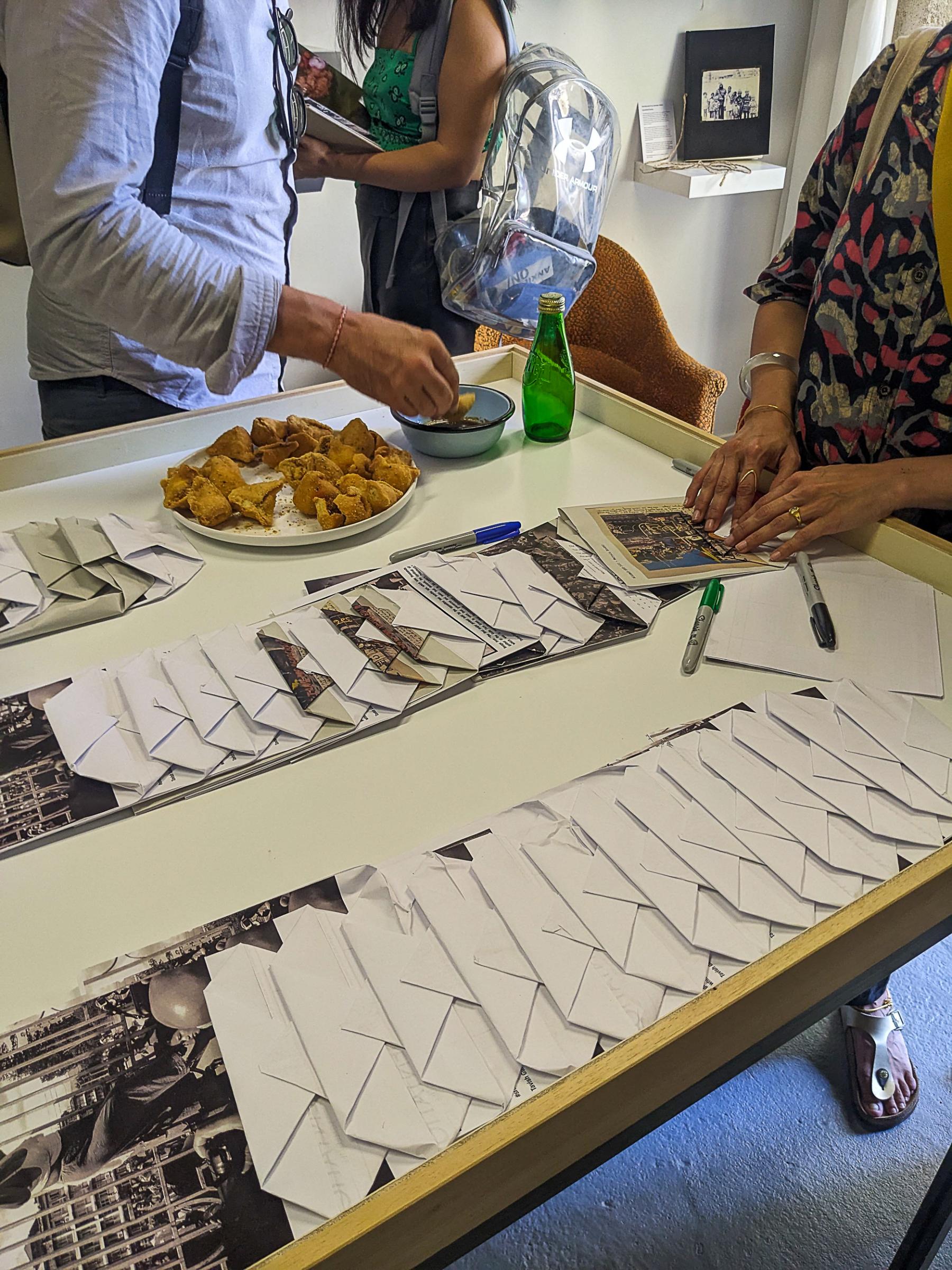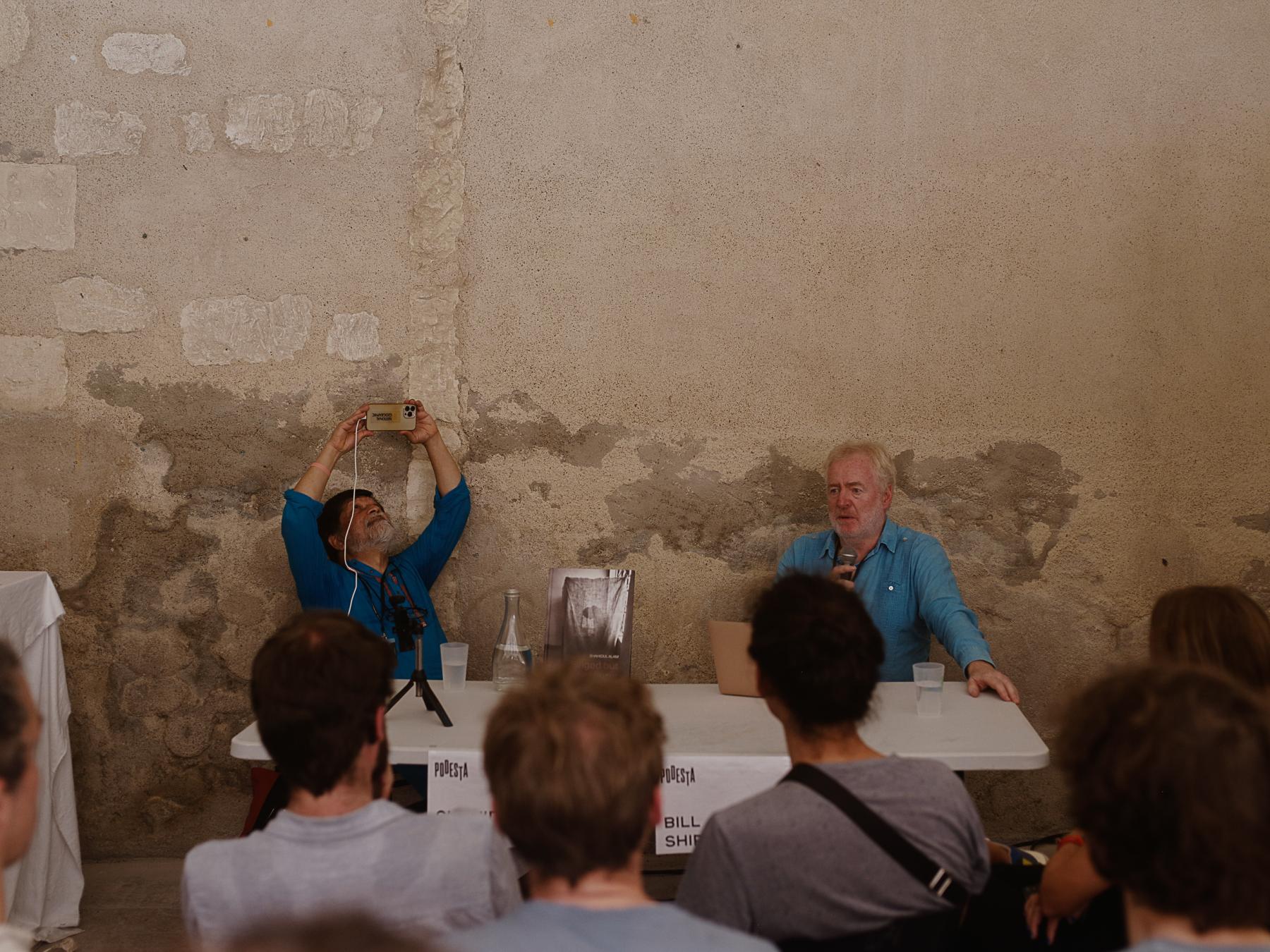Circuits of Making: Akshay Mahajan on Kaghazi Pairahan
A publication is a unique formulation of a specific kind of response that compiles many other acts. With every reading, it mutates ever so slightly, growing alongside interpretations and extensions that attend to its many possibilities as a tangible and conceptually rich format. Kaghazi Pairahan is a curatorial endeavour located at the intersection of thinking spatially with and around multiple acts of reading, activating the published and circulated written word along with nebulous notions of the image in South Asia. Examining the specificity of what it means to curate and create an environment of and for archival tendencies, the project was also an opportunity for makers and viewers alike to consider how narratives can engender perspectives within a space. In the second part of an excerpted conversation, co-curator Akshay Mahajan reflects on audience responses and activations, explaining the forms, modalities and trajectories brought together by the scope of Kaghazi Pairahan.

Visitors spill out onto the street during the show opening of the Kaghazi Pairahan at doubledummy Studio, July 2023.
Annalisa Mansukhani (AM): The project places an emphasis on circuits of production and dissemination through the lenses of printed matter and photography. Could you tell us about how some of the material looks at intersections between form/medium and modes of circulation and publishing?
Akshay Mahajan (AkM): There is a deliberate focus on exploring connections between the form/medium of the material and the various ways it is circulated and published. One compelling example of this intersection is Chinar Shah's A Memorial for the New Economy. Shah's project takes shape as a collection of postcards, with each postcard showcasing a hand-embroidered handkerchief bearing the name of a deceased individual. The project serves as a poignant memorial to those who tragically lost their lives due to the controversial demonetisation policy. By presenting the work in postcard form, viewers are encouraged to take these mementos with them, fostering dialogue and urging them to confront the human toll of political decisions.
Another noteworthy project is the Good Morning Anonymous/Collective initiative. Originally from a now-defunct anonymous Instagram account, it functions as an archive of messages that emerged in response to bigotry in WhatsApp forwards, specifically about the Citizenship Amendment Act (CAA) and the National Register of Citizens (NRC) in India. The project aims to subvert the casual intolerance and propaganda that pervade these digital spaces. It accomplishes this by utilising the ubiquitous “Good morning” message format, which is commonly seen on popular messaging apps. In conjunction with the display, a QR code is provided, inviting visitors to create their own subversive WhatsApp memes and actively engage with the content and participate in their dissemination.

Turning the Ordinary into the Extraordinary: Sofia Karim's Turbine Bagh at Kaghazi Pairahan uses everyday samosa packets as potent symbols of unity, resistance and cultural connection to fight against the growing tide of authoritarianism and far-right nationalism in South Asia.
The show also incorporates the translation of publications into video and projections. The central installation within the exhibition is Uzma Mohsin's Awaaz Do. Mohsin combines excerpts from her series Songkeepers with documentation of photographs of individual protesters over five years, skilfully creating semi-translucent collages that blur the boundary between evidence and poetry. These collages also provide a resounding soundtrack for the resistance that permeates the exhibition. Additionally, the inclusion of a video titled Print, from the Jana Natya Manch (Janam) archives, explores the visual materiality of protest theatre to highlight its dual function as both publicity and activism. If read alongside The Sahmat Collective: Art and Activism in India since 1989 by Ram Rahman, visitors can further immerse themselves in the history of this remarkable organisation through in-depth case studies from a diverse range of interdisciplinary projects and performances.
By presenting the material as postcards, incorporating interactive elements like QR codes, and utilising video and projections, the project not only creates opportunities for dialogue but also confronts political decisions. It subverts prevailing narratives in digital spaces and brings forth a multifaceted experience for viewers.
AM: Could you talk about the programmes that were curated for visitors? How did these activate the larger theme of the display and its complexities as a site?
AkM: In addition to the exhibition, a diverse range of engaging programmes were organised, including talks, workshops and various gatherings. These aimed at delving into the possibilities of photography as a form of resistance in the present moment. Recognising that protests without solidarity can sometimes feel empty, a Global South Solidarity Day was planned to coincide with the exhibition, commemorating fifty years since the 1973 Chilean coup d’état. A pop-up exhibition of contemporary Latin American protest books was organised, showcasing the works of renowned artists such as Celeste Rojas Mugica, Musuk Nolte, Federico Paladino, Luis Weinstein, Alexis Díaz Belmar, Alejandro Cartagena and others. The exhibition was curated by Zur, a research unit within doubledummy dedicated to artistic research that interrogates current photographic practices in the Global South.
1.png)
Marking History and Solidarity: The Global South Solidarity Day at Kaghazi Pairahan aligns with a pop-up exhibition of Latin American protest books, commemorating the fiftieth anniversary of the Chilean coup.
It was fascinating to witness the exhibition adapting to the evolving idea of solidarity among the audience. Connections emerged, as, for instance, the work of Celeste Rojas Mugica engaged with Prarthna Singh's Har Shaam Shaheen Bagh. While the former focused on the 2019 Chilean Protests, the latter documents the peaceful protest at Shaheen Bagh, Delhi, from December 2019 to March 2020. This juxtaposition allowed viewers to perceive a new global picture that transcended the insular nature of corporate news cycles.
Another notable intervention was centred around Turbine Bagh by Sofia Karim. Through this intervention, seemingly innocuous samosa packets were transformed into symbols of shared cultural experiences, conveying resistance and solidarity. Visitors were invited to create their own "packets-as-protest" while enjoying tea and samosas and were encouraged to intervene on the streets of Arles.

Sofia Karim's Turbine Bagh transforms simple samosa packets into symbols of protest. As part of the intervention the co-curators invited visitors in Arles to create and share their own expressions of solidarity and protest.
A series of talks were planned at Podesta, a platform by Palais Books, which included an impromptu book launch of Singed but not Burnt by artist and activist Dr Shahidul Alam. It was followed by an engaging conversation between the artist and Bill Shipsey. The book was one of the notable works featured in the exhibition.
Overall, the programmes were aimed at activating the larger theme of the display and its complexities as a site. Visitors had the opportunity to explore possibilities of photography as a form of resistance. Witnessing connections between diverse works from different regions fostered a sense of solidarity and expanded their perspectives on global protests and social movements.

A conversation between Dr Shahidul Alam and Bill Shipsey, in which they talked about the photographer's new book Singed but not Burnt, as well as his life, art and activism. The talk was hosted at Podesta, a forum for books and conversation hosted by librairie du Palais in Arles.
AM: As the exhibition recently concluded, what were some of your experiences with audiences at Kaghazi Pairahan? What were the kinds of reflections that emerged as a response to and from the library?
AkM: The exhibition coincided with a week of civil disturbances in France following the tragic shooting of Nahel Merzouk. This context provided a thought-provoking backdrop to explore the global nature of protests and the challenges faced by democratic institutions and state brutality.
Many visitors seemed to be seeking a platform to express their own thoughts and reflections on the current situation. Numerous discussions revolved around significant themes such as power dynamics, identity, gender, race and history. It became evident that the processes of photographic production, circulation and consumption are inextricably linked to ethical and political dimensions. The reflections from the audience were multifaceted and nuanced. Some expressed profound empathy with the struggles depicted in the photographs, recognising shared experiences of oppression and resistance across different regions and contexts. Others contemplated the complexities faced by protest movements, particularly when confronted with state violence and suppression.
The library, an integral component of the exhibition, played a pivotal role in fostering deeper engagement and dialogue. Visitors were encouraged to explore a diverse range of literature, historical documents and personal narratives that shed light on the subjects explored in the main selection of photobooks and zines. This interactive element prompted visitors to critically reflect on the dominant representations and narratives that often prevail in mainstream discourse. Overall, the response from visitors was one of introspection, empathy and a yearning to challenge existing power structures through art and dialogue.
Kaghazi Pairahan is supported by Arthshila, and will be showcased across all Arthshila centres in India in 2024.
In case you missed the first part of this conversation, read it here.
To learn about other events at the 2023 edition of Rencontres d’Arles, read Mallika Visvanathan’s conversation with Matthieu Orléan on his exhibition featuring filmic scrapbooks and Sukanya Baskar’s essay on Riti Sengupta’s work Things I can’t say out loud, which received a Special Mention for the Madame Figaro Prize.
All images courtesy of Devadeep Gupta and Akshay Mahajan.




